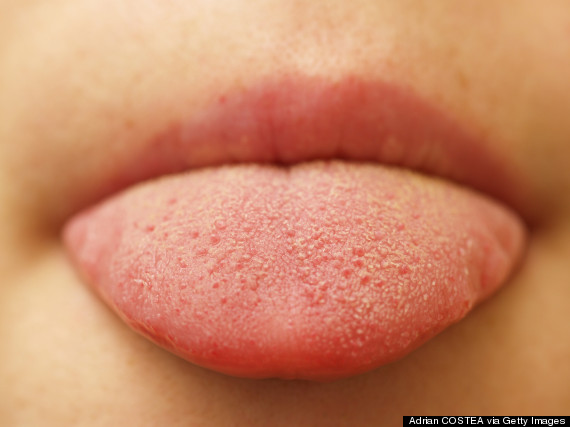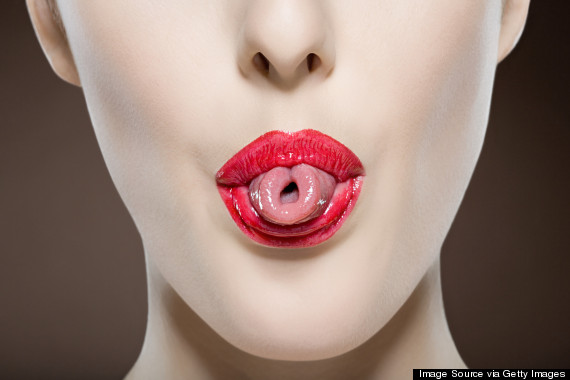
Without it, we'd struggle to eat, breathe and talk -- but how much do we really know about our tongues?
Here are eight fun facts, busted myths and health tips about the misunderstood organ.
That's measured from the back of the throat to the tip. But the new Guinness World Record for the longest tongue clocks in at 10.1 centimeters -- measured from the tip of the tongue when it’s stuck out to the lips, the BBC reported. The owner of this beast of a tongue is Nick Stoeberl, above, who surpassed the previous record of 9.8 centimeters. "[T]he part of Stoeberl's tongue that extends beyond the lips is longer than the average person's tongue in its entirety,” the BBC wrote.
The average tongue has thousands of taste buds.
Somewhere between 2,000 and 10,000, Nicholas Bower, M.D. told Woman's Day. People with more than 10,000 taste buds are known as “supertasters”, while people with fewer taste buds are known as nontasters. Every 10 to 14 days, your taste buds die off and are replaced.
You can't see your taste buds.
They're not visible to the human eye. Those little pink and white bumps you do see on your tongue are actually called papillae, hair-like projections that taste buds rest atop.
You don't sense different tastes in different areas of the tongue.
Despite those tongue maps you’ve likely seen, you can taste sweet, sour, salty, bitter and umami relatively equally across the tongue, LiveScience reported. Don't believe it? Put some salt on the tip of your tongue, the supposed home to only sweetness taste receptors.
The ability to roll or curl your tongue isn't entirely genetic.
Despite the popularity of this semi-myth, there's likely some sort of environmental factor at play. Otherwise, genetics experts argue, how could a child who at first cannot roll his or her tongue later learn how to perform the feat? "Family studies clearly demonstrate that tongue rolling is not a simple genetic character, and twin studies demonstrate that it is influenced by both genetics and the environment," John H. McDonald, Ph.D., associate professor in the department of biological sciences at the University of Delaware wrote in his 2011 book Myths of Human Genetics. “Despite this, tongue rolling is probably the most commonly used classroom example of a simple genetic trait in humans.”
It's not really the strongest muscle in your body, either.
The tongue is not only incredibly flexible, it also helps us perform some of our favorite activities, like talking and eating -- and it never gets “tired”. As impressive and, let’s face it, weird as it may be, the tongue just doesn’t cut it when it comes to strength: It doesn’t produce the most pressure (that'd be the jaw muscle) or the most force (the quads and the glutes) or the most work overall (thanks, heart). Not to mention, it’s actually a mashup of eight different muscles, Scientific American reported.
Its color can give your doctor hints about your health.
A healthy tongue is a nice pink shade -- except for right after it has devoured blue ice cream or purple candy. Some allergies and infections might cause some redness and swelling of the tongue called glossitis. A bright-red color accompanied by fever and sore throat may be more serious.
White patches on the tongue and inside the mouth can be a sign of thrush, a fungal infection usually treated with antifungal medications in healthy adults and kids without major consequences, according to the Mayo Clinic.
A smoother than normal tongue might be a sign you're skimping on nutrients like iron, folic acid and vitamin B12, WebMD reported. Alternately, if skin cells build up on the normal bumps of the tongue, the tongue can have a "hairy" or darker than normal appearance. This isn't usually a medical issue, but rather a stain from food, bacteria or even tobacco use.
If the tongue is red and blistered, it's probably too dry, a sign that you might not be making enough saliva, which could in turn be a side effect of some blood pressure or allergy meds, ABC News reported.
A fat tongue could be a warning sign for sleep apnea.
A recent study from University of Pennsylvania researchers found that the tongues of obese people with obstructive sleep apnea (OSA) had larger tongues with more fat. “Previous studies showed that the human tongue has a high percentage of fat, and that tongue fat and tongue weight were positively correlated with the degree of obesity,” the study’s senior author Richard J. Schwab, M.D., said in a statement. “This is the first study that examined OSA patients and found higher fat deposits in obstructive sleep apnea patients than in those without OSA.” The findings might help explain the increased risk of the sleep disorder among obese people, WebMD reported.
